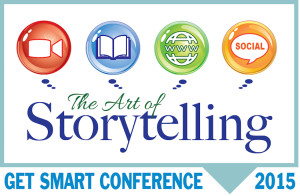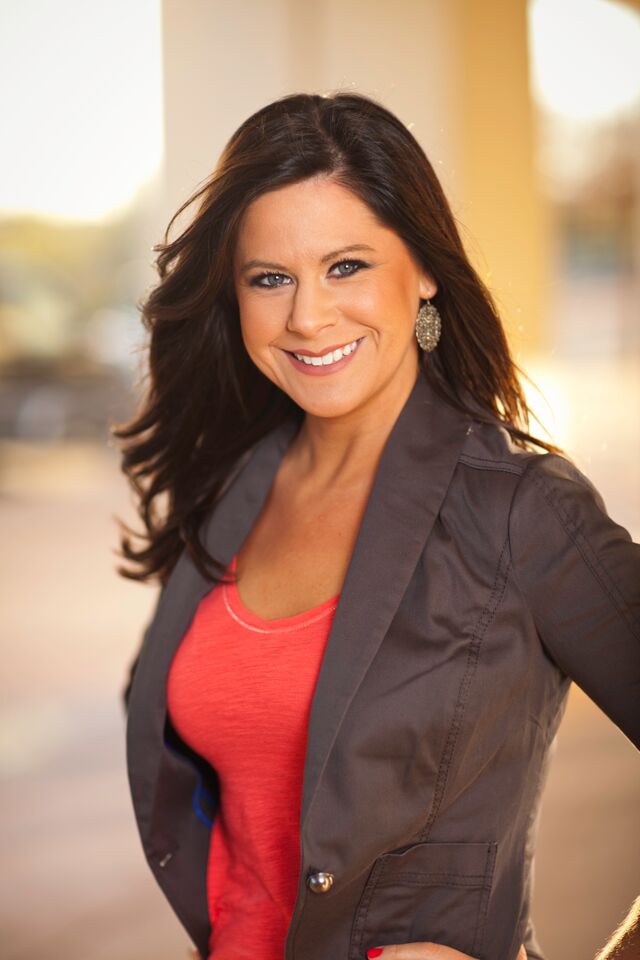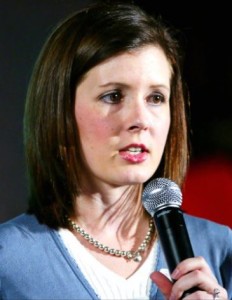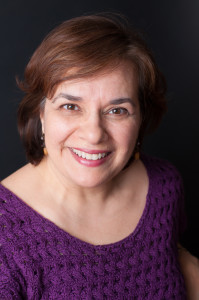Written by Cristina Salinas.
At Get Smart 2015 this Friday, November 6, Austin-area communicators will gain an inside perspective in using social media as a pivotal business strategy. In Becoming Social Media Savvy: The ins-and-outs of social media, why it’s here to stay and how to use it to your advantage, panelists Stephanie Carls of My Savvy Life, Lani Rosales of TheAmericanGenius.Com / TheRealDaily.com, Janice Suter of GSD&M and moderator Karen Aroian of Aroian Editing & Communications will share tips of the trade to help communications pros keep up with social media best practices and the latest tools.
Stephanie (SC), Lani (LR) and Karen (KA) sat down with WCA to answer a few questions to provide a sneak preview of Breakout Session Three:
How did you begin working with social media?
LR: I was actually working with digital marketing long before it was called social media, and my title was “Asset Manager,” as our online customers were the company’s assets – I helped manage our site and oversaw the online lead generation program.
And even years into my job, I was quite hesitant to use Twitter as it launched, but joined at the behest of Benn Rosales, my husband but more importantly, my boss – and he was right, it is, was, and will be a tremendous marketing tool. Nearly eight years and 60,000 tweets later, it’s been a business changer!
KA: I began posting events around 2010 for a few of my favorite nonprofits on a volunteer basis. By 2014, a lead gen firm approached me to edit their long- and short-form marketing content, including their social media posts to Twitter, Facebook, and LinkedIn. I relish tweaking the words and phrases that influence the big world, and there’s always new trends in social to keep you on your toes.
SC: As a person who always loved communication, marketing, and technology, this was an amazing fit for me. I started to see how this would impact businesses and it’s been such a fun ride to see how it’s continually changed. I started studying as much as I could on what was happening, started a blog, and then continued learning. From there, I was offered a job developing social strategies for companies here in Austin!
What’s the first pivotal lesson you learned about achieving results?
LR: Regarding social media, my first pivotal moment was that I had made some inaccurate assumptions. I once believed that getting people offline was natural for people, but it turns out to be the opposite.
Nearly a decade ago, when we began using social media to promote offline events, I realized that as people flooded into the doors at our events, others struggled to pull in a handful of attendees, and the lightbulb went off right above my head, and I never made assumptions like that again.
KA: Social media succeeds when a plan is in place and approached as a team effort. If you’re on the communication team, keep monitoring and asking for feedback. Are posts producing the expected results? A healthy bit of back and forth between communicators and decision makers makes a difference.
SC: You have to make sure that everyone is on the same page about what you are measuring. If everyone is looking for different results, then goals will never be achieved.
My biggest lesson to businesses is to build a community around you, pay attention to analytics to find out what people are asking/looking for, then find a way to help. This is where your results are going to come in because you are finding ways to be that expert others are looking for. KPIs always need to be measured, so set them as soon as possible.
What advice would you give someone who is interested in starting to use social media?
LR: Master one thing at a time. Don’t look at what others are doing and try to catch up, signing up for every platform you can find and overwhelming yourself. You’ll experience burnout. Pick one social media platform, study it for at least 20 hours straight before you sign up or get started. Get a feel for what’s working for your competitors, and in other industries, then blaze your own path. Once you’ve mastered that, add one more social network and don’t even consider signing up for a third until you’ve mastered the second, and so forth.
KA: Stop. Think through all aspects of your launch one more time. Once you start posting, you are committed to keeping up with a ferocious editorial calendar, so take the time you need to carefully clarify your marketing, content and media strategies for the long haul. Begin by getting your team together and asking the right questions:
- What do you want to get out of social?
- What are your goals in priority order?
- Who is your audience and what do they want?
- Where and how are the best ways to actively engage them?
- How much of your budget are you prepared to put toward research and content creation?
SC: Always have goals. Plus, make sure these goals are achievable and you are looking at the right numbers. Sure, follower count is a popular choice, but it won’t do you any good to build up your followers with people who aren’t interested in what you do. Build an engaged following.
Crafting a story is an art, what’s the best storytelling advice you’ve ever received that worked?
LR: “Put yourself in their shoes,” our founder tells us all the time. When we craft news stories, we are instructed to honor our readers’ time and talent, and never condescend, yet always elevate their thinking. Putting ourselves in their shoes is the only way we can accomplish that.
KA: Be bold. Be brief. Use active verbs. Avoid awkward sentence construction. Cite your sources. Read your content aloud if you’re unsure about it. Good stories need time to percolate. Clarity is power.
SC: Find ways to help others tell your story. We all trust our peers over companies, so companies can develop ways to do more “story-making” and less “story-telling”. Your customers have wonderful stories to share about working with you and your business. Ask them about it and then feature these stories to inspire more people.
What’s the most frequent challenge you have seen companies face as they implement social media in their communications strategies?
LR: Oh that’s an easy one – personality. The cliché of “be yourself online” applies to brands, too. Social media is an extension of your overall marketing and brand, not a separate entity, so it is a failure to use Twitter to share silly cat pictures when you’re an advocate working with domestic violence victims. Your brand’s personality must match your social media use, and it must flow with all of your other efforts, so take it seriously – it’s not a teen toy, it’s a powerful way to expand your brand.
KA: One challenge I find most interesting is impatience with ROI. When sales and marketing teams bank on producing results beyond likes and engagement, they can end up perplexed or, worse, disappointed when the campaign is a dud. Some expect social to do what social, in general, cannot do alone—generate significant leads, increase click rates and social e-commerce sales. They need clearer definitions around social media and realistic expectations from it.
SC: The most frequent challenge I see from companies is people wanting to measure the wrong thing. You have one half of the room that is interested in follower counts and the other half interested in sales numbers. Make sure that everyone is aligned on how to make both happen. It’s a pay-to-play market now, so everyone has to understand how to make this work. Build up a loyal following and you’ll see the community grow as well as your sales.
What is the biggest takeaway you’d like attendees to have after attending your session at Get Smart?
LR: Your time is precious. If your efforts on social media aren’t converting into dollars or accomplishing your other goals, you’re wasting time.
You should have three obsessions with your social media accounts: productivity tools, analytics to measure the effectiveness, and goal setting. Without those three things, you’re just diddling around and wasting your time in public.
KA: As a content editor, I’m naturally encouraging communications teams to reflect and reach further before posting. What’s persuasive about the message—and the way you’ve framed it? What’s a better call to action? Why is this information important to this audience today? If your posts are not reaching enough eyeballs, enlist help to review your strategy and execution as well as to develop, clarify and polish what you most need to communicate.
SC: It isn’t a race. Let’s make smart business decisions on what to expect from social media and how it fits in the overall marketing and sales strategy for your business. Social doesn’t stand alone. It takes many pieces to keep the ball rolling.
Can you share a storytelling success story?
LR: Ooh, I have a great one! We host this quarterly mixer for the Austin Digital Jobs Group to connect the hottest brands with super talented job seekers. It’s a lot of fun, but let’s face it – job hunting is scary, and going to a big event for the first time can be nerve wracking, no matter who you are. There’s a lot at stake.
So, to help people out, I crafted a lengthy letter describing the event. We send it out a few days before the event, and it is single-handedly the highest converting tool we’ve ever had for any event in the history of ever. We’ve been told by so many people that it’s what made them feel compelled to attend, and several sponsors have said it’s why they’ve joined the mixer (aka given us money).
KA: More than once I’ve rescued an editorial calendar in shambles. On Day 2 for one client, I remember learning a new software system, assigning eighteen overdue projects to writers and restoring a workable calendar. By Day 3, I had edited and posted an additional nine backlogged assignments. Moments of 100 percent success like this are exhilarating. My best advice is to be sure to take your 20 minutes to relish your accomplishments just in case the next thing you hear is “Why did that take you so long?” instead of “Thank you!”
SC: This comes from a customer at Rivet, but telling this story never gets old. We have a client that started asking their customers for before and after photos of their home projects. Little did they know the success this would start for them. They were able to help capture an amazing amount of stories, but even got connected with a client who was redoing an entire house with their products and ended up using their story in their TV commercial. If they would haven’t asked for these stories from their clients, they would have never known. All you have to do is ask….
 Are there 3 social media “don’ts” that you’d ask attendees to avoid?
Are there 3 social media “don’ts” that you’d ask attendees to avoid?
LR: Don’t blindly follow blanket advice. If you learn something reading this or at Get Smart, test it out yourself. Then test it again. And again. And once more, before you implement it. Every industry is different.
Don’t use social media after 10 p.m. You can automate your posts, but trust me, social media is addictive – if someone asks you or your company a question, it feels like a fire, and you’ll find yourself urgently tweeting at 2 a.m. Your productivity will suffer.
Put limits on your use. Don’t have incomplete profiles. If you sign up for a social network, before you ever use it, take the time to complete your profile fully. Anything short of complete is not only a missed opportunity, but could be a bad first impression.
KA: Don’t go negative. Connect and engage. Don’t get distracted. Focus on the message. Don’t regurgitate. Inspire.
SC: Never purchase followers. It’s not hard to be yourself…be HUMAN when you are interacting with people. Don’t rely on social for everything in your business. Understand it’s only a part of it, but yet a powerful one that can lead to more opportunities.
Get Smart 2015 is TOMORROW – don’t miss out on a great opportunity to hear from 19 Austin communications experts and their insider’s guide for how to tell your story perfectly, every time in any medium. Register before 7 p.m. tonight!
- Announcing Our 2016-2017 Board of Directors - May 31, 2016
- Freelance Corner: Making Impressions, Copyright FAQs and Nixing Procrastination - May 25, 2016
- Austin’s Best Kept Secrets: Swimming Holes - May 24, 2016





